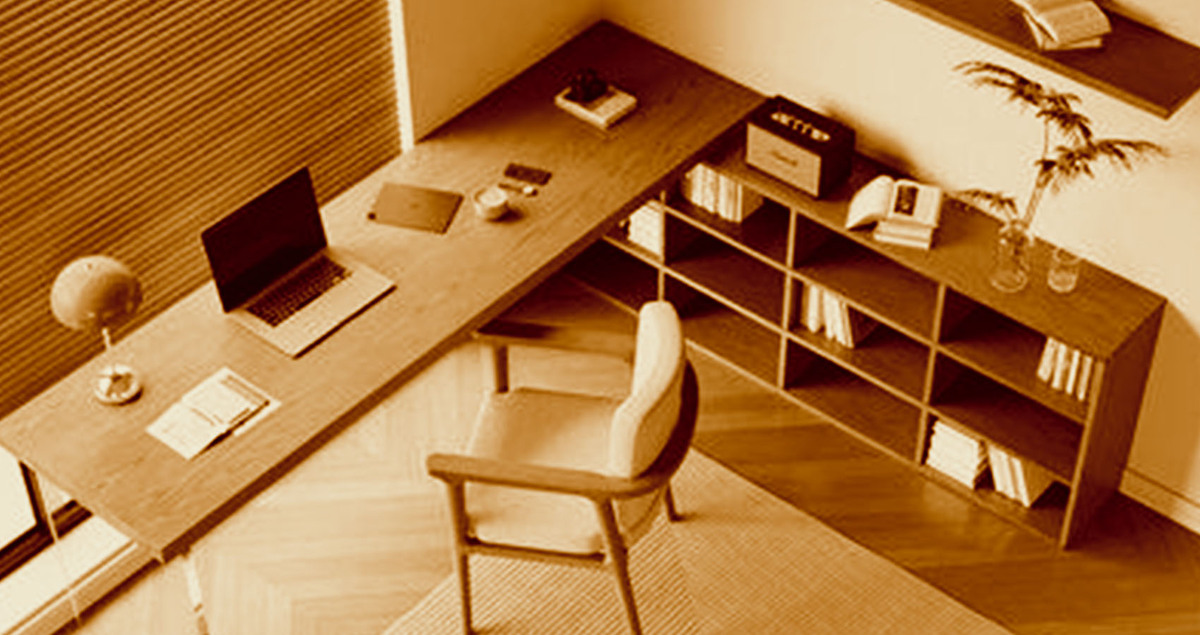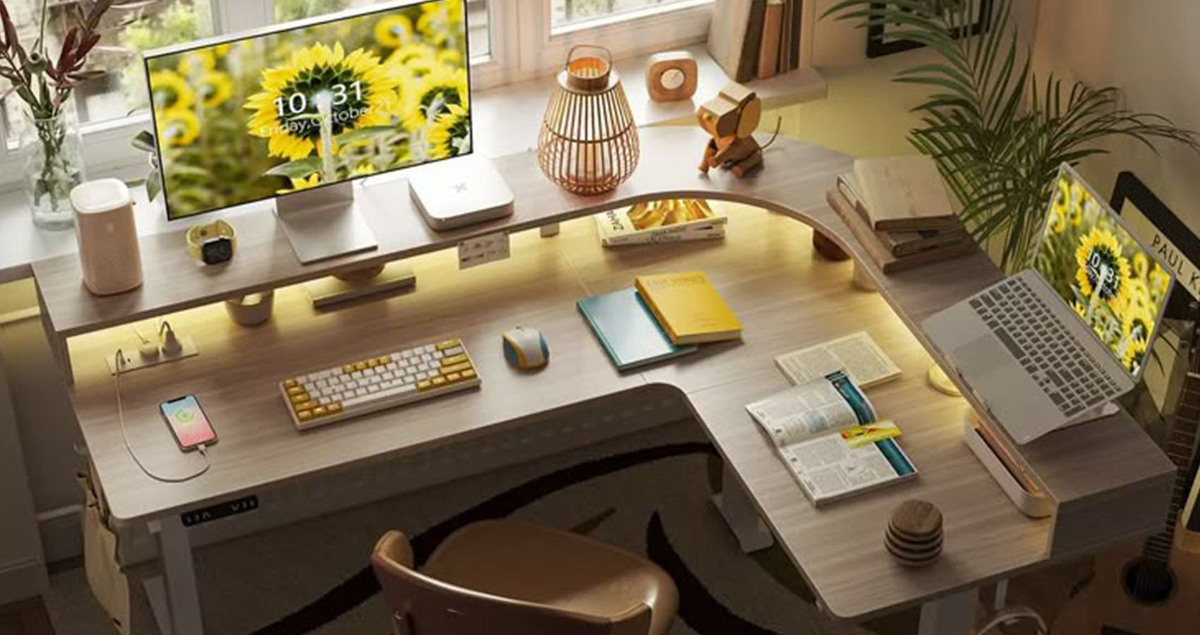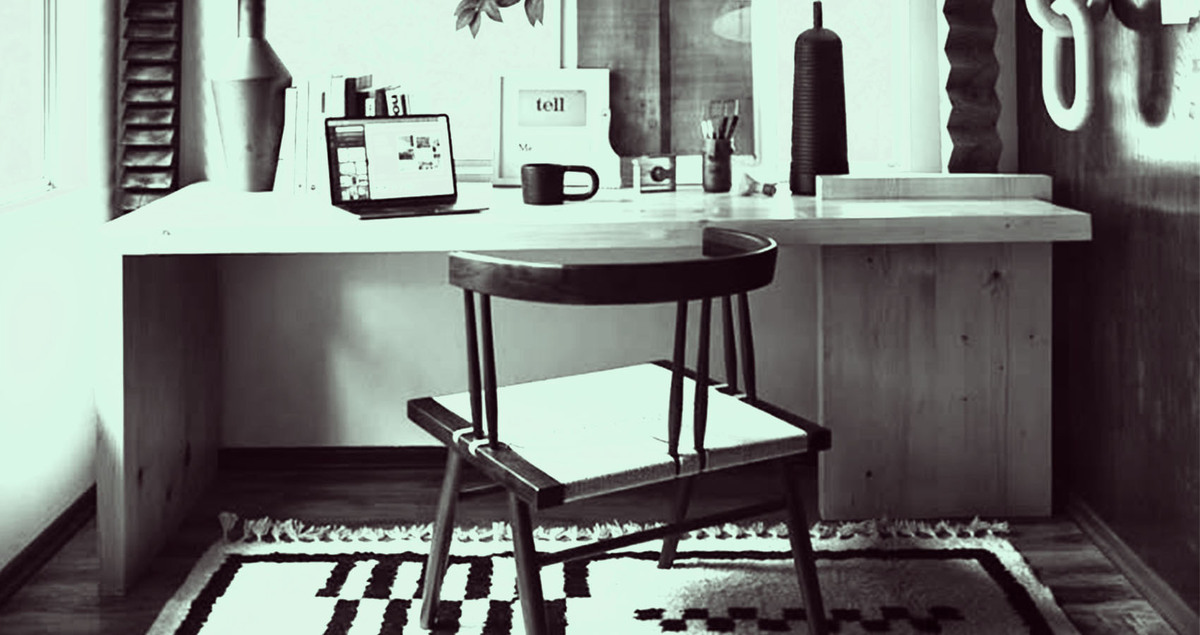
Home Office Hacks to Maximize Limited Space for Remote Work
Tips for small spaces.
Remote work is now a mainstay for many, and while setting up at home sounds simple, limited space can quickly become a challenge. With some creativity and a few effective hacks, even the smallest area can be transformed into a productive and organized workspace.
In this post, we’ll explore practical tips to maximize your home office setup - no need for a complete overhaul, just a few strategic adjustments to help you work comfortably and efficiently.
Assessing Your Workspace Needs
Start by evaluating exactly what you need to work efficiently in a limited space. This isn’t just about cramming in essentials; it’s about prioritizing and making the best use of what’s available.
-
Identify Core Essentials: Consider the basics that genuinely contribute to your productivity—a sturdy desk, comfortable chair, computer, and essential tech. Ask yourself if each item is crucial or if it can be minimized or stored elsewhere.
-
Simplify Your Equipment: Limit your workspace to essential devices and supplies. For example, instead of multiple monitors, opt for a laptop stand or compact second screen that folds away. Even small changes, like choosing a wireless keyboard and mouse, can keep the desk space open and organized.
-
Create Temporary Storage: Set up a system for items that don’t need to be on your desk daily. Use portable boxes, wall-mounted shelves, or small bins under your desk for easy access without cluttering the workspace.

Choosing Multifunctional Furniture
Multifunctional furniture can make a huge difference in a small home office. Pieces that serve multiple purposes, like foldable desks that can be stowed away after work or storage ottomans that double as seating, help save space while keeping essentials close at hand. Consider wall-mounted desks or adjustable shelving units that use minimal floor space while maximizing vertical storage.
These types of furniture allow you to create a flexible workspace that adapts to both your work needs and your home’s layout, making it easier to maintain a clean, organized environment.

Keeping It Clutter-Free
A clutter-free workspace reduces stress, especially in a small home office. With limited space, every item needs a place, and sticking to a regular tidying routine makes it easier to maintain a clean, organized environment.
Here are 3 strategies for keeping your workspace clear and functional.
Daily Desk Reset
At the end of each workday, take a few minutes to clear your desk. Put away items like notebooks, pens, and coffee mugs to reset your workspace for the next day. This small habit prevents clutter buildup and creates a fresh start every morning, allowing you to dive into work without distractions.
Rotating Seasonal Supplies
If you have items that are only useful during certain seasons—like planners, binders, or equipment used for specific projects—consider rotating them out when they’re not in use. This keeps your immediate workspace clear and ensures that only relevant tools are close at hand. Items not needed year-round can be stored away in boxes, bins, or higher shelves to free up space.
Utilizing Self-Storage for Infrequent Items
For items you rarely use but still want to keep - such as old files, spare office equipment, or sentimental items- renting a self-storage unit can be a great solution. By keeping seldom-used belongings in an offsite storage unit, you maximize your home office space for daily essentials, making it easier to maintain a neat, efficient setup without overcrowding.

Vertical Space Optimization
When floor space is limited, vertical space becomes a valuable asset. Making use of your walls not only clears up room around your desk but also keeps everything you need within reach. By strategically arranging shelves, organizers, and storage solutions along the walls, you can transform a small space into an efficient, clutter-free work area.
Installing Wall-Mounted Shelving
Adding wall-mounted shelves above your desk or in nearby corners is a smart way to store books, files, and supplies without taking up desk or floor space. Choose adjustable shelves that allow for easy reorganization or stackable units that match your storage needs. Wall-mounted shelving creates a dedicated spot for essential items while keeping your desk clear for daily tasks.
Using Hanging Organizers
Hanging organizers, like pegboards or hooks, allow you to store smaller items, from stationery to chargers, in an accessible way. Attach these to walls or the sides of your desk to keep items organized without adding bulk to your work surface. Pegboards, in particular, are highly customizable and can hold everything from notebooks to small tech, making them a versatile addition.
Maximizing Corners and High Spaces
Corners and higher wall spaces are often overlooked but can be useful for additional storage. Corner shelves or even small cabinets mounted higher up can store items you don’t need frequently, like reference books or backup supplies. Keeping less-used items in these spaces helps to clear desk and floor areas, ensuring you’re only surrounded by what you need daily.

Creating Zones for Efficiency
Dividing your small workspace into dedicated zones can improve focus and make the area feel more organized. Even within a limited area, separating work, storage, and relaxation zones can help you mentally switch gears throughout the day, adding both structure and comfort to your home office.
-
Work Zone: Position your desk and chair in a way that minimizes distractions. Ideally, face a wall or window for a clear, focused view. Keep essential tools, like your computer, notepad, and daily-use items, within easy reach on or near the desk.
-
Storage Zone: Dedicate a nearby area for storing documents, supplies, and equipment you don’t need at your fingertips. A compact shelf, cabinet, or small filing system works well here, providing a structured space for items you don’t use constantly but still need access to.
-
Relaxation Zone: If space permits, include a small corner for breaks. This could be a simple chair or even a cushion against the wall. This area helps you take a breather without leaving your workspace, creating a clear boundary between work and rest.
-
Document Organization Spot: A small, separate area or drawer for document organization keeps papers from piling up on your desk. This helps maintain a clean workspace and ensures important paperwork is sorted and accessible.
-
Tech Charging Station: Designate a spot to charge devices, ideally near an outlet but away from your primary workspace. This prevents cords from cluttering your desk and keeps your devices charged without needing to unplug and re-plug constantly.
-
Personalized Decor Zone: Use a small section of wall or a shelf for decor or personal touches. This could be a photo, plant, or art piece that adds character to your space without overtaking the work area. Small decor elements can make the space more inviting and are easy to update when you want a refresh.
Creating defined zones, even in a small setup, brings clarity and order to your workspace, making it easier to stay productive while keeping the space comfortable and organized.

Achieving Balance in Your Home Office
Transforming a small space into an efficient home office is entirely possible with thoughtful planning and a few adaptable strategies. When each element serves a purpose, and there’s room for both work and relaxation, even the smallest setup can feel comfortable and productive.
By designing a workspace that supports focus and minimizes distractions, you create an environment where you can work confidently and comfortably, day after day.











